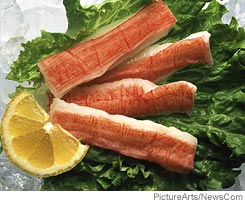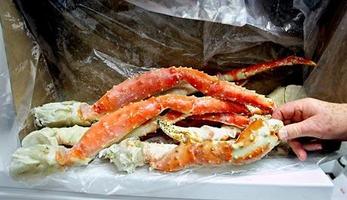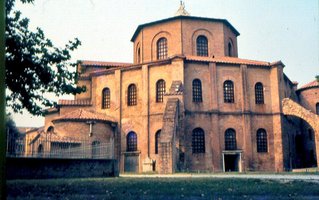December 28, 2006
Belltown Bravos, II
In which we cite the neighborhood's most deserving establishments.
See previous entry for winners in other categories.
RESTAURANT OF THE YEAR
Black Bottle. Last year's "Best Newcomer" comes of age.
Consistent execution of a worthy goal: good, inexpensive and unpretentious fare, several notches above pub grub but not so fancy or fussy that it requires tablecloths, waiters who fawn or sommeliers who frown. A year and a half after opening, they're adding great dishes (pork belly with kimchi, lemon-squid salad, peach-blueberry skillet tart) and perfecting long-time favorites (grilled portobello with butter beans, chocolate cupcake with vanilla gelato).
Pork belly with kimchi, kettle tart
A brief aside. National and local outlets alike are proclaiming this to be the Year of the Pig. (See Brasa's Bravo just yesterday.) Pork bellies eventually turn into bacon; fine. Black Bottle's slow-braised, sliced and skewered version transcends the genre. Have eaten around the world, rarely encountered anything as intensely flavorful.
And here's the exciting thing: Black Bottle's crew--surprised and slammed a year ago by 200 orders--now turns out as many as 400 plates like this every night at affordable ($9 and under) prices. Notoriously, one over-blasted plate of "Broccoli Blasted" was served to the critic from the Seattle Times; his skeptical, one-and-a-half-stars review (normally a kiss of death) reminds us all that kitchens do occasionally make mistakes, and that all restaurant reviews are subjective.
Used to be, co-owner Chris Linker and chef Brian Durbin had to go into a long explanation about the gastropub/izakaya concept; no more. Umi Sake House and Wann Japanese Izakaya have come along in the past year to validate the concept. One more thing: the kitchen's still open at midnight, so you can break those fast, fasting transcontinental flights with food that's hot and tasty. Fortunate indeed that we live in Belltown.
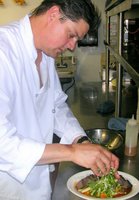
Broccoli orders, Chef Brian Durbin
Black Bottle, 2600 1st Ave., 206-441-1500
Looking for last year's winners? Some 200 posts ago, here
December 27, 2006
Belltown Bravos, I
Our annual "Best Of" awards come in two sections this year, given the wealth of material. Personal opinions, to be sure; your mileage may vary.
Pouring Alpine Martinis at Cascadia; parsnip soup with scallop at Mistral
BEST BAR
Once again, last year's winner: Cascadia. The signature Alpine Martini now costs $4.50 during happy hour, but it's still a bargain. Mini-burgers are a buck, salmon-burgers two bucks. Can't ask for a friendlier barman than Michael Candelaria.
BEST PROMOTION OF THE YEAR
Brasa, for its unique "Life of a Pig" dinner. In case you missed it, chef Tamara Murphy began by blogging her weekly visits to Whistling Train Farm. For two months, she reported on a growing litter of piglets, following them from birth to humane slaughter, then into her kitchen and onto the table for a full house of grateful diners. Nothing better to bring home the connection between our generous land, the animals it sustains and the hungry humans it nourishes.
MOST IMAGINATIVE CUISINE
Mistral, which no longer gives its guests a printed menu, but sends out one creative dish after another. Still remember flavors from a dinner there in February, especially the kitchen's famous brown-butter and parsnip soup, which came with an orange crescent of carrot foam alongside a seared scallop. Bravo, William Belickis!
NEWCOMER OF THE YEAR
Casting my vote here for Whole Foods. Sure, there's a lot of concern that its organic produce is costly, that it's wrongheaded not to stock traditional brands loaded with preservatives. (If you really wanna buy crap like that, go to Safeway, for crying out loud.) Whole Foods is what it is: an alternative chain store. With three delicious eat-it-here cafés, too.
Runner up: get the feeling I'll also be seeing a lot more of Lisa Nakamura at Qube this coming year. Edgy Asian flavors, classical French techniques.
DISTURBING TRENDS OF THE YEAR
Where'd all the freakin' pizzerias come from? (Exceptions: Serious Pie, La Vita è Bella.) Why are there suddenly six (seven?) sushi parlors along Second Avenue? Which leads me to...
COMPLAINT OF THE YEAR, AGAIN
What Belltown really, really needs: a noodle parlor. (Don't tell me about Noodle Ranch; I know Noodle Ranch, and, for me, it's, well, the Dan Quayle of noodle parlors.) I mean a genuine Vietnamese Pho joint with lemongrass and weird chunks of meat and basil and jalapenos and tables surrounded by families with their faces in the steaming bowls of noodle soup.
Tomorrow: da best of da best.
December 24, 2006
A family affair
Elegant new white-tablecloth place atop Queen Anne, Sorrentino, courtesy of a well-established Seattle restaurant family (La Vita è Bella, Mondello, Ballard's new DiVino wine bar). Italian, of course, all-but-forgotten regional dishes little-known here, created and executed by owner and guiding spirit Enza Sorrentino. Couscous with lobstertail, shrimp and generous side dish of fresh marinara from Sardenia, for instance. Risotto with duck, ravioli with cod or crabmeat, a real vitello tonnato; traditional ossobuco in a saffron and orange sauce, unusual polpo (octopus) in a green sauce.
Mamma Enza does recipe research for Sorrentino's; shellfish couscous awaits tomato sauce
As the menu explains it:
For Sicily, geography has always been destiny. The rocky isle, a land mass the size of Vermont, rises from the Mediterranean like a giant pebble kicked by the toe of Italy. Phoenicians, Greeks and Romans viewed it as a strategic military and cultural outpost.Ringed by rich waters and covered with dense forests, amazingly fertile hillsides and ancient vineyards, Sicily is both a crucible of original recipes and a melting pot of culinary traditions.
Enza Sorrentino grew up in Palermo, among the small farms, vineyards and fishing villages of the Mediterranean coast. For the past few years, in much-loved neighborhood restaurants like La Vita è Bella and Mondello, Enza and her family have served as culinary ambassadors, bringing the spirit, flavors and hospitality of Sicily to Seattle.
Now, at Sorrentino's Trattoria, Mamma Enza, alongside her son Fabio, expands her repertoire to a range of historic, traditional, antique and forgotten dishes that honor regions across Italy: Friuli, Lombardy, Latium, Campania and Apulia as well as the islands of Sardinia and Sicily.
"There is so much more in Italy and spaghetti, risotto and pizza," is Mamma Enza's motto. It could be the opening salvo in her mission to broaden Seattle's appreciation for Italian cooking.
More than simple generosity, it's abbondanza: a surfeit of good things to eat and drink. For everyday, a lavish buffet. For gala occasions, a cornucopia of antipasti, multiple courses of pasta, endless meat and vegetable platters, and an infinity of desserts. Mangia! they say. And, good guests, you should!
There. Couldn't have said it better myself.
Family & friends surround Enza before the official opening of Sorrentino.
![]() Sorrentino, 2128 Queen Anne Ave. N., Seattle 206-694-0055
Sorrentino, 2128 Queen Anne Ave. N., Seattle 206-694-0055
PS: You can vote once very 24 hours in an informal poll on LocalWineEvents.com for your favorite wine & food blog. Help keep Cornichon.org in the top three! The ballot is here. Thanks!
December 19, 2006
Whatever turns you on
Aroused Americana, the latest cookbook from Seattle's cheerfully over-the-top icon Grill is a collection of recipes by corporate executive chef Nick Musser, the good-natured dude in charge of the kitchen at icon and its offspring, Zephyr Grill in Kent. It's as high-spirited as the restaurant's kitschy décor and boffo plates, described last year as Seattle's best "comfort food" by AOL subscribers.
![]()
Cookbook, Nick Musser, duck breast, candy-cane cake
Dishes like velveeta-infused mac-and-cheese and bacon-wrapped meatloaf do inspire a certain awe, especially when the mac-and-cheese is breaded and fried. True believers adore concoctions like the Holiday Candy Cane Cake with alternating red and white layers (identical except for food coloring), frosted with peppermint cream cheese and garnished with Marsachino cherries.
Musser, bless his soul, was once named Husband of the Year by a national magazine. Chris Keff hired him to run the kitchen at Flying Fish. At icon, his seared duck breast with barley & mushroom risotto shows admirable restraint. And the rest of the menu, long on sweet and smokey flavors, probably does qualify as Aroused Americana Cooking for a lot of folks whose regular fare is Domino's.
Indeed, icon fills a void in foodie-obsessed Seattle: a spot for suburban shoppers, overnight businessmen at the Westin and tourists from the motor inn across the street, uncertainly yearning for some Big City excitement. Go ahead, folks, take a chance and run under the Monorail. It probably won't hit you.
December 16, 2006
My nuts are blue
There are times, we admit, that we just don't get it. Downtown merchants, in a rare spasm of civic altruism, turn over space to a bizarre philanthropic two-fer: Pacific Northwest Ballet, which has its own money-machine at McCaw these days, the iconic Nutcracker, and Northwest Center, the most sacrosanct of local charities.
Some 60 identical, 6-ft sculpted nutcracker figures, subjected to politically correct ornamentation by various and sundry local artists, stand mutely outside coffee shops and department stores. Concept started in Chicago, with cows, later turned up locally with pigs. As ubiquitous and unavoidable as carols (religious and secular), and no less annoying.
This one's named "Nurturing Our Diverse Interwoven Heart." Along with the other 59, it's listed on eBay. Auction closes Thursday afternoon; starting price was $250, shipping extra. As of this moment, there are no bids.
December 15, 2006
Guy walks into a Belltown bar
Orders a cosmo. The new thing, in case you hadn't heard, is ultrapremium spirits. So barkeep pours ultrapremium Ultimat vodka from blown-glass container resembling oversize perfume bottle, adds Cointreau, splash of cran, wedge of lime and proffers resulting pink drink. "That'll be $15."
The bar would be Qube, site of the unlamented St. Regis Hotel at 2nd & Stewart on the fringe of Belltown, now complete with seismic retrofit and ambitious kitchen. Very high-end libations first, guided by Angel Aguilar (late of Axis).
Bar at Qube: manager Angel Aguilar, right; wine consultant Jake Kosseff, left. "Ultimate Cosmo
Anyone for gin? Hendrick's, enhanced with ultrapremium Junmai Dai Ginjo sake, served with a cucumber ice cube and an edible orchid, $12. Bah, humbug! Scrooges should request more conventional tinis, ritas, kazis in the single digits.
Complex dinner "sets" at Qube aim high, with three riffs per course on the same ingredient, available as surf, turf or veg (shrimp, duck, mushrooms). More on dinner (relatively affordable, compared to cocktails) shortly. First, though, better give me another orchid.
Qube, 1901 2nd Avenue, Seattle, 206-770-5888
December 13, 2006
You know you're back when ...
Okay, even unrelated to the Xmas tree fiasco at SeaTac (pause, wait for it, waiiit, nevermind), the first big story that crosses the screen is "Soy Makes You Gay." Apparently because soy is a feminizing devil food.
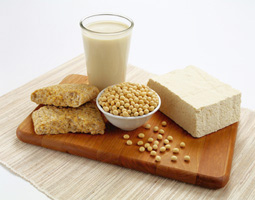
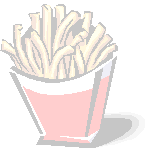
And here I was so hoping the story would be "Transfat makes you fat." Another day, that.
Baffling, this whole nutso need to blame what you eat on who you are. Thought it was the other way around, no?
Then along comes this morning's Wall Street Journal with a report that companies like Seattle's Trident Seafoods have succeeded in changing the name of "imitation crab" (that tasteless fish paste usually made from pollock or Pacific whiting). Food & Drug Admin will now let them call it, so help me, "Crab-flavored seafood, made with surimi, a fully cooked fish protein." This is better? Lobstermen and "real" crabbers are concerned that the ersatz krab might be mistaken for the real thing. But that's just silly: Costco's selling the real, real thing, Russian crablegs, for peanuts.
Basta! I'm not going out into that windstorm for a soymilk latte after all.
December 11, 2006
Arrivederci! Mille grazie!

Great time in Italy, thanks to ENIT (the Italian State Tourist Board), ITPC, the Italian Travel Promotion Council, the Emilia-Romagna regional government, and the kindness of Alitalia.
Some 50 well-traveled travel agents, tour operators and journalists on the trip; we were stuffed with prosciutto, porcini and pasta (stuffed, in turn, with pumpkin and parmesan). The only "complaint" I heard was that the wines, somehow, were less than formidabile: fizzy lambrusco, fizzy malvasia, light-bodied fortana...
Okay, all you silver-haired vitelloni at the back of the bus, listen up: we're in Emilia-Romagna, one of 20 distinct Italian regions. They don't make Chianti here! While they do grow some sangiovese in Romagna, Tuscany's favorable terroir lies on the other side of the Appenines. The great Barolos and Barberas are hundreds of miles away.
What you get on the plains of Emilia is alluvial sand and gravel; lambrusco is what grows here. On the hillsides, where they air-dry that superb prosciutto, that's where the vineyards are planted with malvasia. Soft, light, slightly bubbly stuff, undistinguished, nothing you'd want to take home, but it suits the food and that's the point: it's the product of this place and nowhere else.
And that's why we travel, isn't it? To see things where they belong (in piazzas, on ceilings!), to taste foods where they originate, to drink the wine that local folks drink every day. Everythng else is like reading a book or visiting a museum.
Final note: as always, knowledgeable and personable guides can make or break a trip. Many thanks to our experts, Verdiana Conti Baioni and Paola Golinelli of Ad Arte.
December 10, 2006
Ferrara: capital of hemp
In the centuries before the Po delta silted up, Ferrara was a leading seaport. Captains throughout the Mediterranean would tie up at one of the city's seven piers to have their ships fitted with sails made with canvas from Ferrara. Why? Helps to remember that the term "canvas" comes from "cannabis"... in other words, hemp.
View from Ferrara's castello; "marijuana" matchbox from market vendor; pumpkin-stuffed pasta
Indeed, the plains of northern Italy were once the source of the world's best hemp, used for ropes, cloth and paper. American agronomists were recommending hemp seeds from Ferrara as recently as World War I. Alas, no longer; nostalgia makes for poor industrial policy. King Cotton, though it requires outrageous amounts of water and pesticides, has overthrown Hardworking Hemp and demonized its sexy sister, Mary Jane.
Ferrara's farmers, for their part, no longer harvest tasseled hemp. They're into pumpkins, which turn up in recipes across Emilia-Romagna.
December 8, 2006
1492: the first ghetto
In 1492, Columbus sailed the ocean blue, right? But who rembers that the king of Spain, Columbus's patron, expelled 300,000 Jews from Iberia the same year that his adventurous sailor, Cristobal Colon, set foot in the Carribean?
Ferrara's Castello, medieval street, commemorative plaque outside Sephardic synagogue
Enter the Duke of Este, nominally the Vatican's colonial administrator in Ferrara, who, on his own initiative, issued a historic invitation to the Jewish refugees: come here, come to Ferrara, settle in my town here on the banks of the Po in northern Italy.
There was already a thriving Jewish community under the Duke's tolerant and enlightened rule. No dummy, that Este. He knew that the Jews were educated: to undergo Bar Mitzvah, a Jewish lad has to read and write. His Catholic subjects, by contrast, were largely illiterate. Out of Ferrara's population of 30,000 in the 15th century, 2,500 were Jews who maintained six synagogues.
So the Iberian Jews came to Ferrara, started a seventh, Sephardic synagogue and prospered for almost 500 years. An establishment that lasted until the shameful betrayal of Italy's Jews in the 1930s. (Bassani's 1965 novel and De Sica's 1971 film The Garden of the Finzi-Contini are set in Ferrara.) Parenthetically, the Jews who settled in nearby Venice were required to live in a dingy industrial neighborhood, Cannaregio, site of the city's foundries. The local term for slag-heap: ghetto. Today? Well, Ferrara's historic medieval "ghetto" is its liveliest neighborhood.
More food & wine dispatches from Ferrara shortly.
December 5, 2006
Bright & shining
Wait until dark, then light a candle inside Ravenna's Basilica of San Vitale: you'll be dazzled, awe-struck. Byzantine architecture dating from the middle of the 6th century, its brilliant mosaics--including 25,000 pieces made with gold--virtually intact.
Then go for dinner. You might be served an appetizer of sformatino di squacquerone, bright-tasting and fresh from the oven, accompanied by a delightful, frizzante (slightly effervescent) Malvasia. Two equally satisfying aspects of Ravenna: serious art, traditional food.
December 3, 2006
This cheese stands alone
In the grassy plain of the Po, between Piacenza and Bologna, a quarter million grass-fed cows on 5,000 dairy farms contribute their milk to 500 artisanal producers of a very specific cheese, Italy's finest: Parmigiano - Reggiano.
In batches of 1,100 liters, the combined morning and afternoon milkings (the amount produced by some 40 bovines) is transformed: cream skimmed, casein starter and rennet added, curds cut into rice-sized granules, boiled for 10 minutes in a copper steam kettle under the watchful eye of a master craftsman, then drained, divided in two, wrapped in cheesecloth, formed in traditional, 100-lb. moulds, salted for three weeks, aged for a year, inspected and graded, then aged for another year or two. At the end of the process, the cheese emerges as genuine Parmigiano-Reggiano.
The best, stravecchio sells at the dairy for 13 euros a kilo, about $9 per pound. In restaurants here in Parma, the menu gives you the cheese's full pedigree: name of dairy, month of production. The real thing, when you can find it in the States, is around $15. And is it ever worth it. Dense, crumbly, it isn't sliced but stabbed into little pieces.
Nutty, fruity, sweet and despite the salt that helped create it, with a remarkable complexity and depth of flavor, it's a treat on its own (with a dash of balsamic vinegar, perhaps) or grated over pasta (nothing like the packaged soap flakes sold as "Parmesan" by Kraft). Here and only here: the product of its unique place, always hand-made.
A couple of easy recipes follow. Also, in days to come, the fabulous mosaics of Ravenna and the surprising Jewish history of Ferrara.
Baked eggs
Separate 4 eggs. Cook the whites in a skillet with 1 TB butter or olive oil until they're almost set, then slide in the yolks and cook a bit longer. Top with an ounce of shaved Parmigiano-Reggiano cheese and serve at once. (For an extra treat, add some truffle shavings as well.)
Parmigiano-Reggiano soufflé
Mix 3 ounces of flour with a bit of cold water and begin heating the mixture. Add 1 cup warm milk and continue heating, but don't let it boil. Stir in 3 ounces of aged Parmigiano-Reggiano and take off the heat. Separate 5 eggs and add the yolks, one by one, to the cheese mixture; season with salt and pepper. Whip the whites and gently fold them into the cheese mixture. Pour into a floured soufflé dish and bake in a 350-degree oven for about half an hour. Serves 2 as a main course, 4 as a side dish.
Don't thank me, thank those Italian cows.
December 2, 2006
Moon over Parma
Cold and damp, it's been lately. Pale, watery afternoon sunshine gives way to fog creeping up from the mighty Po. Thermometer registers 40 but body feels like -10. Call it humidity chill. (Is this what a bottle of well-cellared wine feels like?) Anyway. Outside Parma, the castle of Rocca di Soragna, complete with living prince, full name Diophebo Mello Lupi di Soragna. (Nice guy, goes hunting with yellow lab retriever, leaves for heli-skiing trip in British Columbia next month.)
That's right, the Drew Carey theme was about Parma, Ohio, wasn't it? Never mind. Parmigiano-Reggiano dairy not far from here. Pix tomorrow.
December 1, 2006
Looking up: a heavenly interlude
Don't worry, Gran, they're still feeding us! There's the beautifully lean Culatello di Zibello that's been cured on the moist banks of the Po; there's the traditional Prosciutto from the hills behind Parma, where the Mediterranean air carries scents of chestnuts and pine trees; and the fragrant porcini mushrooms from the mountains. But before we go on to the next meal, a pause to savor the religious history of this place.
Ceiling of the dome in the Parma cathedral; ceiling of the baptistry
Il Papa was on TV last night, in a live feed from the 17th century Blue Mosque in Istanbul. Looking upward, he would have seen many domes.
Here in Parma, though, the massive romanesque cathedral has but a single dome, painted in 16th century by Correggio with an awe-inspiring sense of upward movement in his spiral of angels. And just across the piazza, the imposing gothic baptistry has eight sides, decorations in Byzantine style, and another painted dome.
The unique, historic good fortune of Emilia Romagna is its agriculture: fertile plains, fresh water from Italy's longest river, favorable winds, easy access to salt (don't laugh; read Mark Kurlansky's terrific book). How fortunate we are today that its medieval citizenry invested the quirky gift of prosperity in the creation of great art. Okay, a lot of it was bishops building the power of the Church. No matter: the lofty architecture of Parma's piazza owes its very existence to the happy circumstances of the lowly pig.
